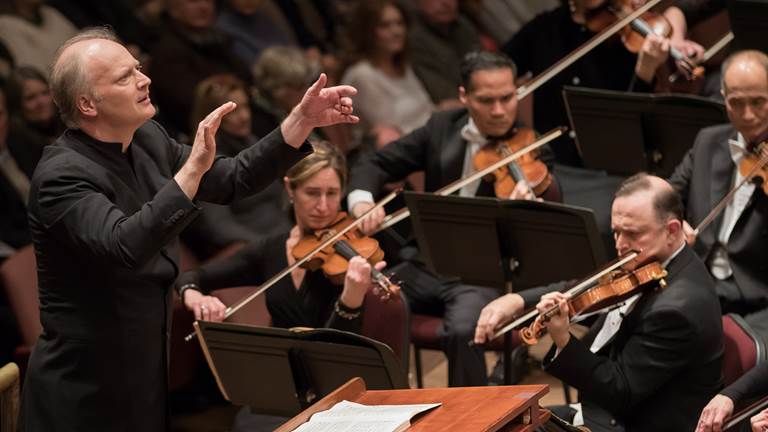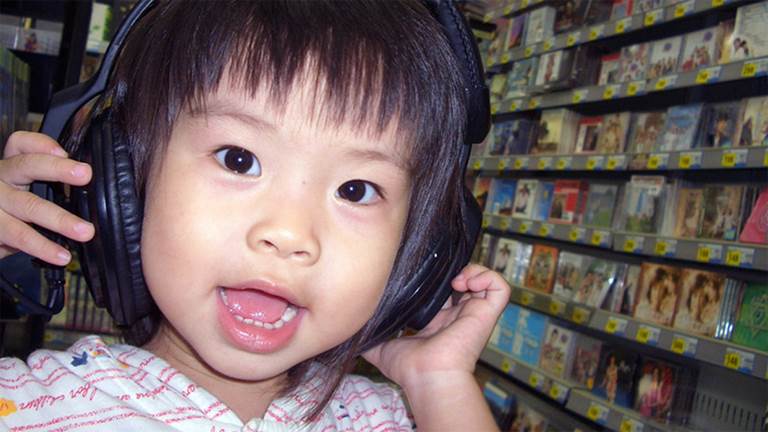Picking a Title
Other titles Aaron Copland considered for his fanfare were Fanfare for the Spirit of Democracy, Fanfare for the Rebirth of Lidice—a town in Czechoslovakia that had been destroyed by the Nazis, and Fanfare for Four Freedoms. The last title refers to a 1941 speech by President Roosevelt in which he listed the four freedoms people everywhere should enjoy:
- freedom of speech;
- freedom of religion;
- freedom from want;
- freedom from fear.
The Cincinnati Symphony played the commissioned fanfares to begin their concerts during the 1942–43 season. Most of the songs had military themes, such as A Fanfare for Airmen, A Fanfare for the Fighting French, and Fanfare for the American Soldier.
Copland came at the assignment from a more grassroots level. “I sort of remember how I got the idea of writing Fanfare for the Common Man,” he recalled later, “—it was the common man, after all, who was doing all the dirty work in the war and the army. He deserved a fanfare.”
Fanfare for the Common Man premiered on March 12, 1943, and the three-minute musical work stirred patriotic feelings like few others did. Unlike most fanfares, Copland’s is slow and majestic. It starts with percussive drums, gong, and timpani, rumbling like a distant battle. Then the clear, clarion call of three trumpets, playing in unison, establishes the main theme. French horns join the trumpets, building support and harmony. Finally, the growls of trombones and tuba emerge from below as the fanfare builds to its climax—the brass ensemble establishing a powerful wall of sound. Fanfare for the Common Man seems to capture in music the notion of people bravely joining forces to stand against danger.
Not all of Copland’s fellow artists were as pleased as the public by Fanfare for the Common Man, however. A few critics even complained that some of Copland’s music roused the kind of intense nationalist feelings that caused wars.
Still, the fanfare struck a chord that called for American courage when it was most needed. And it still stirs the hearts of Americans today—whether they recognize it by name, or just by its soaring notes.
The melody of Fanfare for the Common Man is also heard in Aaron Copland’s Third Symphony, which premiered in 1946.
Fanfare for the Common Man is not just reserved for the concert hall. It is frequently used to inject a feeling of heroic purpose at political rallies, sporting events, and in movies and TV programs.
Jazz and rock stars have been inspired by Copland’s masterpiece, as well. The orchestra of jazz clarinetist Woody Herman arranged a version they often used to close their performances. In 1975 and 1976, the Rolling Stones opened their shows with part of the fanfare. The rock bands Styx and Emerson, Lake & Palmer have adapted it, too.
 President Franklin D. Roosevelt stood before Congress and delivered the news to the nation: The U.S. was at war. The Japanese had invaded China ten years earlier. Nazi Germany had overrun most of Europe in 1939–1940. Then, in 1941, it turned its armies eastward to invade the Soviet Union. The United States had avoided getting drawn into direct fighting—until now. Japanese planes had struck our naval base at Pearl Harbor, Hawaii, and other Pacific targets in a devastating surprise attack.
President Franklin D. Roosevelt stood before Congress and delivered the news to the nation: The U.S. was at war. The Japanese had invaded China ten years earlier. Nazi Germany had overrun most of Europe in 1939–1940. Then, in 1941, it turned its armies eastward to invade the Soviet Union. The United States had avoided getting drawn into direct fighting—until now. Japanese planes had struck our naval base at Pearl Harbor, Hawaii, and other Pacific targets in a devastating surprise attack. The music of
The music of 








